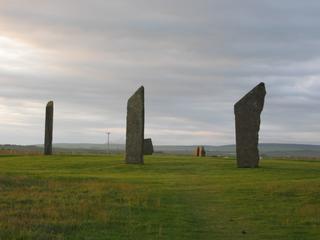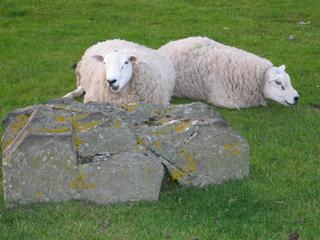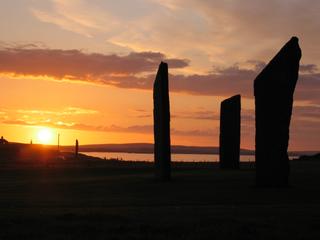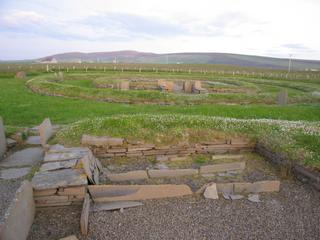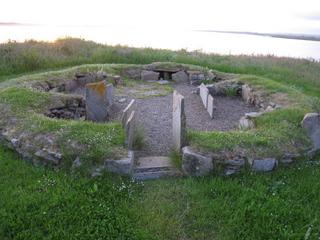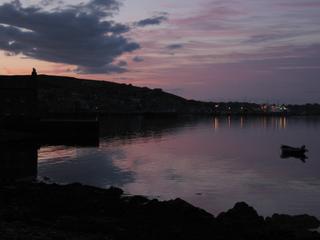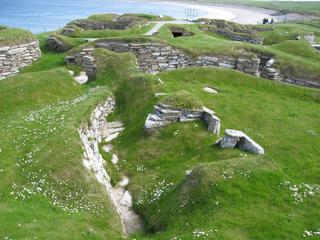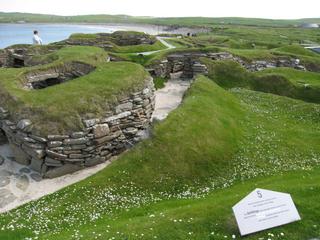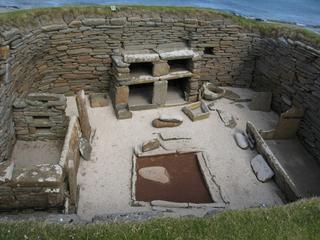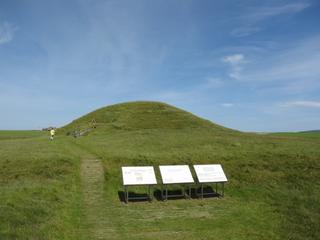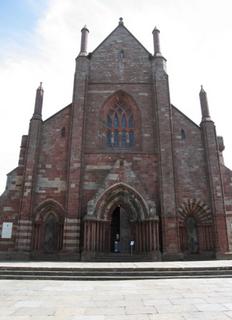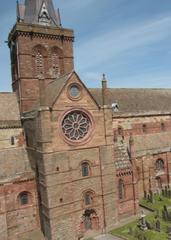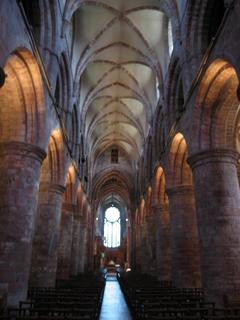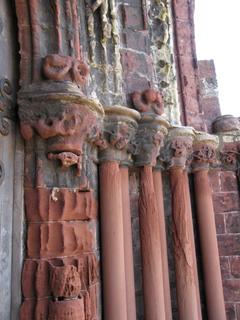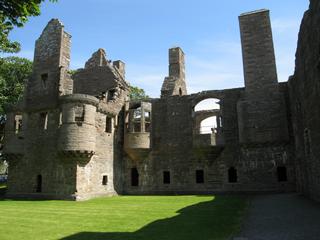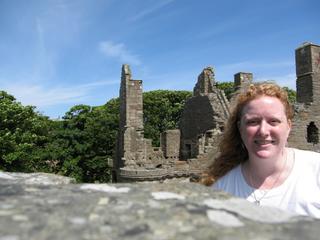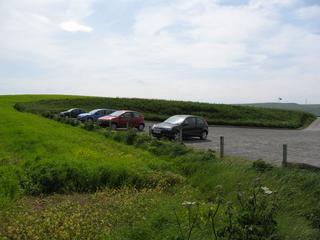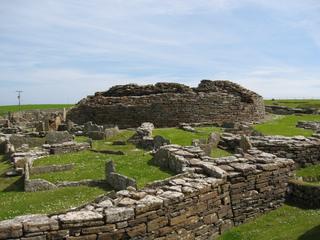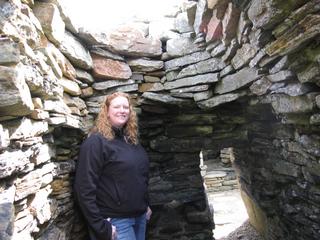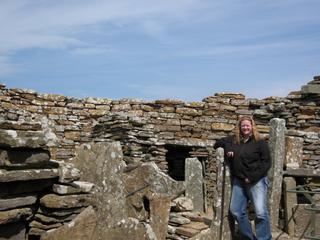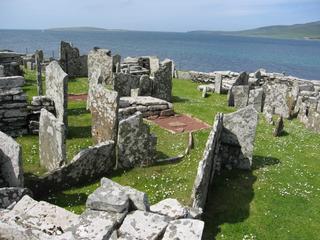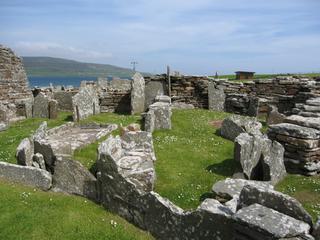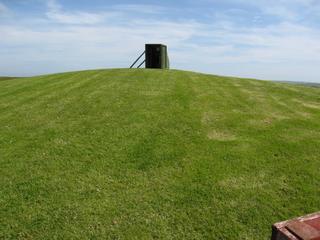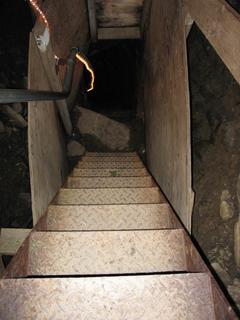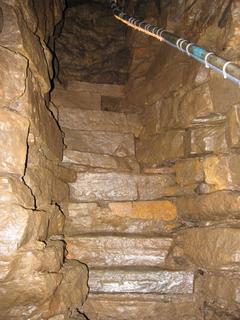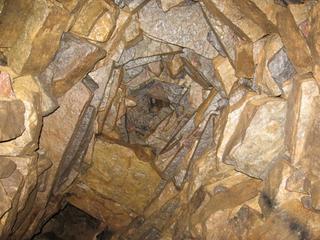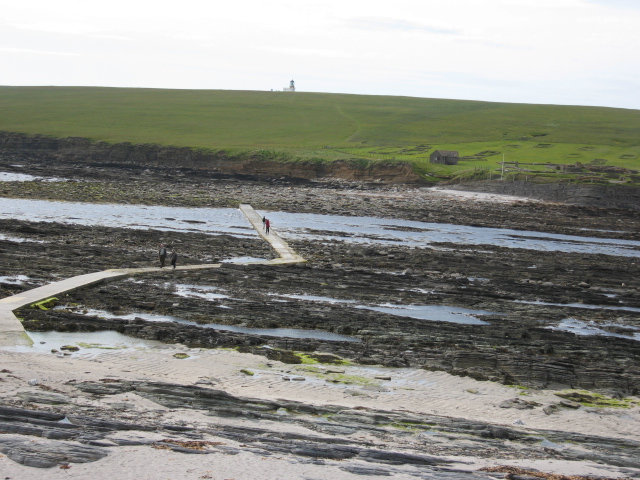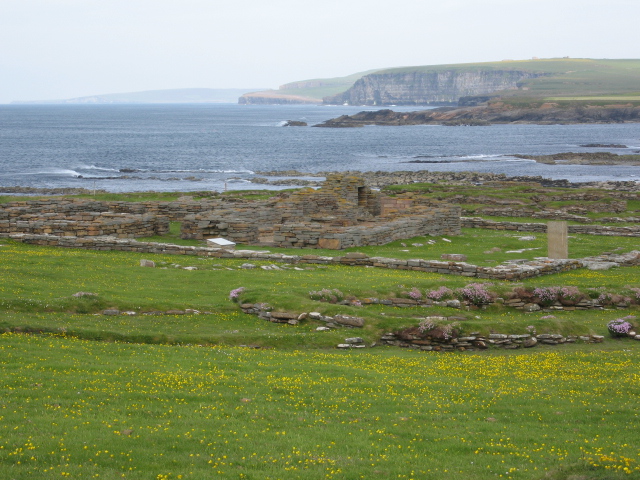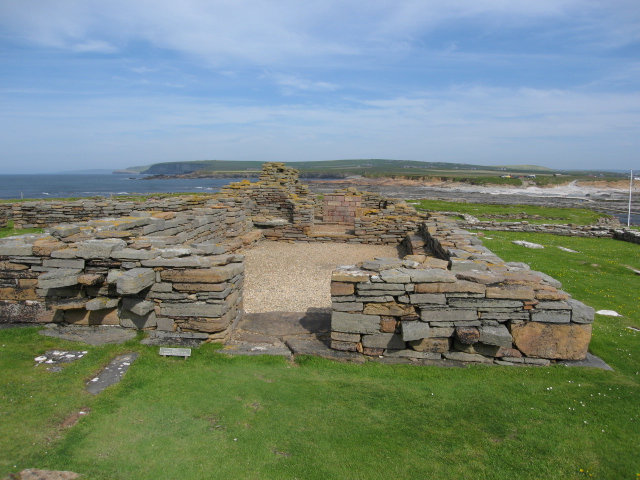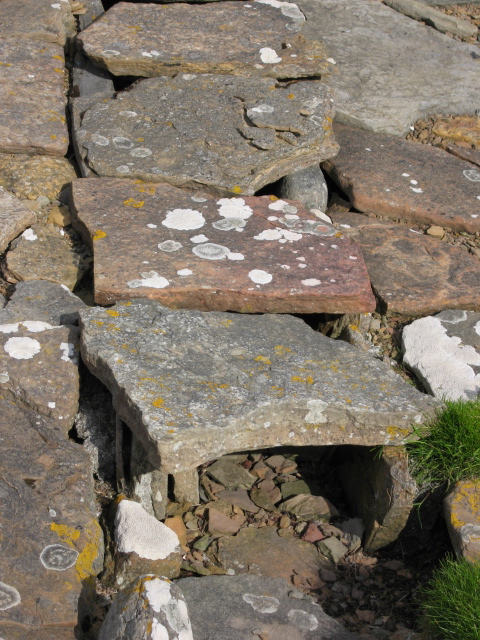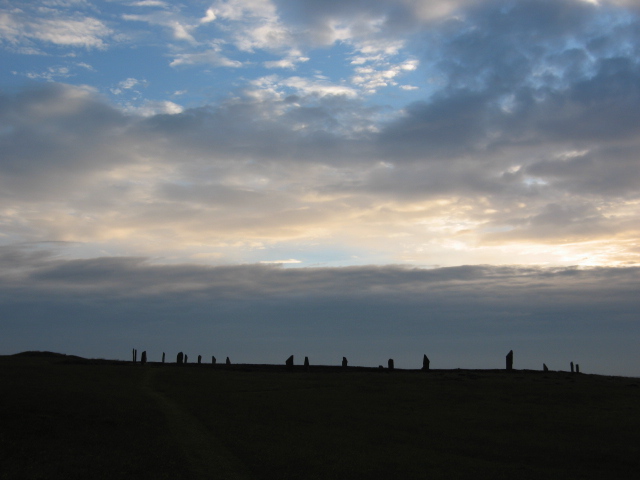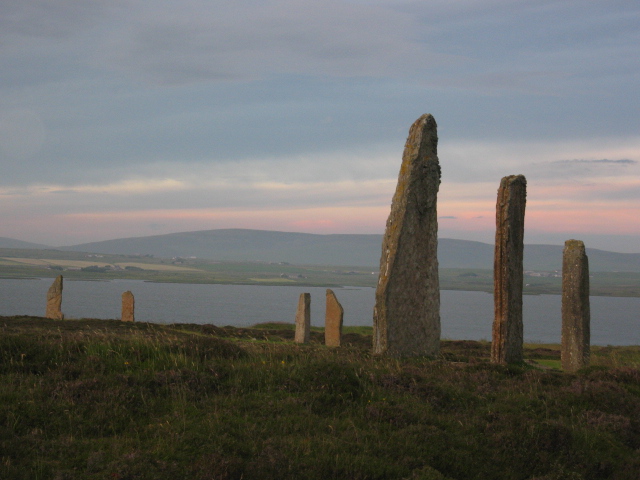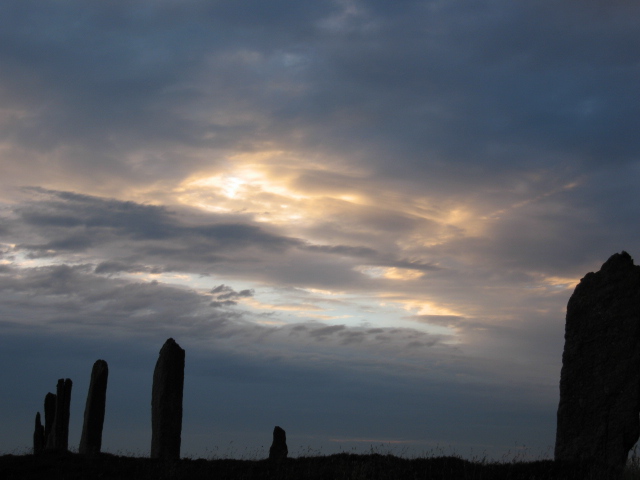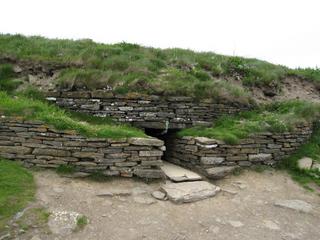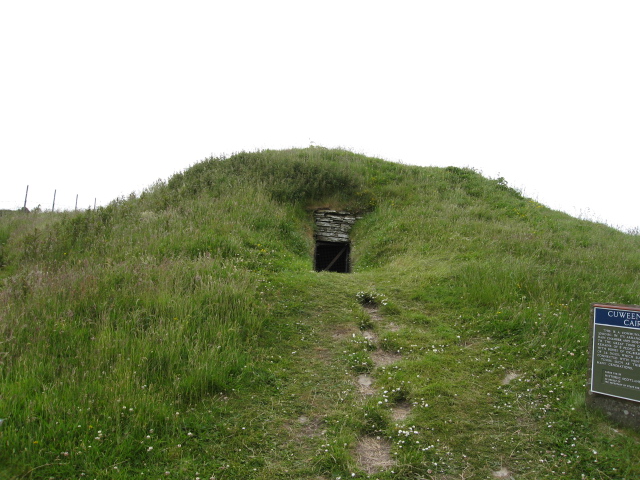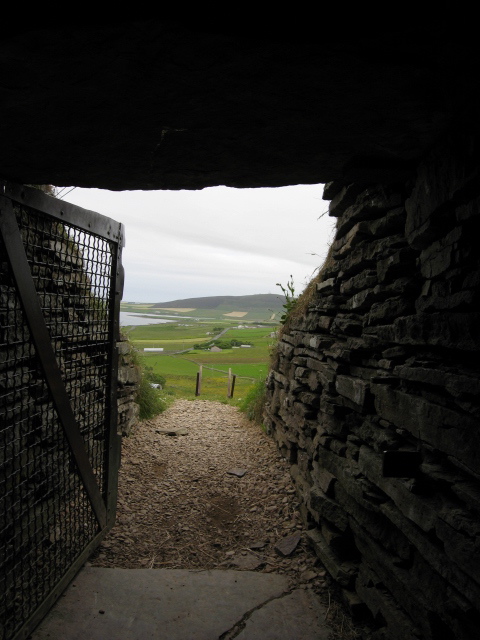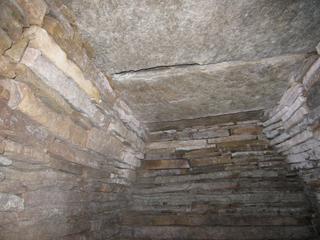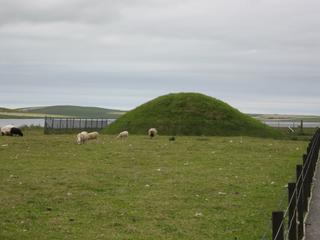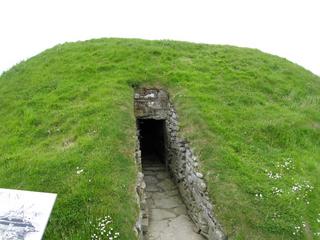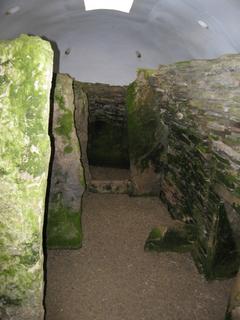Orkney
I got to Orkney on Friday night, and left Sunday, which only gave me a day and a half to explore the island. But I soon discovered that Neolithic Orkney is a World Heritage Site, and with good reason. I had a fantastic time, and really wished I could have stayed there longer.
Friday, June 30
The ferry to Stromness got me in at 8:30. I'd already eaten dinner, so, since it was so light out, I decided to go for a drive after checking into my hotel. When I saw the signs for the Standing Stones of Stenness, I decided to see if they were still accessible.
Standing Stones of Stenness
They were! The stones are in the middle of a farmer's land, and there were actually sheep grazing around the stones.
The light was fantastic, and as the sun began to set, the sky had fantastic colors. I'm sure the short daylight hours in the winter are pretty harsh, but the long summer evenings should make up for it in spades!
Neolithic Village
A couple wandered in from the farm fields as I was photgraphing the stones, and asked if I'd scene the neolithic village. They pointed me down I small path, and there the village was, just a short walk from the stones. It hadn't even been mentioned in my guidebook.
The village:
One of the houses:
Stromness
When I got back into Stromness, it was still SO light out that I went for a walk. It was peaceful and charming.
The idyllic one-street town:
I had to take a picture of this sign because of how off-handedly it mentions "the Franklin Expedition." Of course everyone knows about the Franklin Expedition. Right?
Saturday, July 1
It was a little strange trying to sleep when the sky never really gets dark. I woke up several times and looked outside, thinking I must be late for breakfast, only to discover it was actually 2 am. I wasn't late for breakfast, but made an early start for a relatively packed day.
Skara Brae
Skara Brae is the Big Draw. It's a neolithic village that's over 5,000 years old (older than the Egyptian pyramids), and was fantastically preserved. It had been buried by a sandstorm, and was only discovered when a wild storm in 1850 blew the sand dune away and revelaed the ruins. When it was uncovered, some of the houses had stone "dressers" still standing in the center of the rooms.
The village (kinda reminds me of Hobbitton...):
This shows the stone dresser. The rectangles on either side were beds, and the red thing in the middle was the firepit.
Maes Howe
Maes Howe was a very cool cairn that originally became famous because some Vikings left a bunch of graffiti on the stones after breaking in. But I think it's more impressive because of the humongous stones used to construct it with no mortar and no metal tools. The front of the cave is lined up so that on the winter solstice the sun shoots down the entryway and lights up the inside, though I hear the sunlight is very good for the 80 days surrounding the winter solstice as well.
Unfortunately, there aren't any pictures allowed inside, so I can only show you the outside.
Kirkwall
I went to Kirkwall to see St. Magnus, a red sandstone cathedral, only built on a smaller scale than a typical cathedral.
Sandstone is pretty soft, and the weather has had a big effect on some the stone:
I had to find out about the evil Earl Patrick Stewart (no, not him, this guy.) The Earl was a bit of a brute; rumor has it that the palace was built with slave labor. It was a fun ruin, if you're in the neighborhood, but not something I'd go out of my way to see.
The Broch of Gurness
A broch is a round, iron age tower, and apparently they are exclusive to Scotland. Archaeologists don't really agree on their purpose.
I had apparently chosen the right time to visit. The Broch of Gurness is one of the major Orkney attractions, but this is how full the car park was. The first car is mine, and one belongs to the man running the ticket office. I didn't even see the owners of the other cars.
The broch.
For scale, I'm 6'3". And it's not an optical illusion, the entry to this room really was that small. I crawled. Everywhere I visited emphasized that people weren't really short when these buildings were built. The small entrances are thought to have kept out the wind and weather.
Me again. I liked this broch!
The village surrounding the broch:
Mine Howe
Mine Howe was an interesting visit. It's only been excavated recently, and it sounds like the experts aren't really sure what to make of it. The site also has a more rugged feel - no fancy interpretive center, just some portable trailers.
When I arrived, I went through the visitor trailer, and was then handed a red hard hat and a torch (flashlight). At first glance, the site didn't look too promising (the green building is what we're heading into)
I was advised to go down the step like you would a ladder. And I was immediately grateful for the hard hat, as it banged against the stones above me.
Here's the big Mine Howe mystery. These 29 steps led to something. But what?
Looking up at the ceiling from the bottom of the steps.
Mine Howe was great. Damp and dark and dirty, with the air of exploration. This is why I wanted to be an archaeologist for so long. It would be so much fun!
The Broch of Birsay
The Broch of Birsay is interesting because it's only accessible during the two hours on either side of low tide. The rest of the time, this walkway is underwater.
The broch. This site was settled and resettled by the Picts and the Vikings, and at one point had a monastery.
I thought these stone drains (built by the Norse) were pretty clever.
The Ring of Brodgar (or Brogar)
After visiting all the sites, I had a very nice dinner at the Hamnavoe Restaurant in Stromness (very good, but you need to make reservations), then headed over to the Ring of Brodgar. About half the signs spelled it Brogar, but I never figured out why. Being able to maximize the long daylight hours to visit the free sites after everything else was closed was really nice.
Sunday, July 2
I had originally booked my ferry to return me to the mainland Sunday morning, so I could get to Aberdeen early. But when I drove up to the deserted ticket office, I realized my mistake: I'd actually booked the return ticket for Monday. Oops. A quick phone call and the ticket was changed (with no extra fees!), but I now had 5 hours to kill. It wasn't hard.
Tomb of the Eagles
The brochures and pictures of the Tomb of the Eagles were slick, but it was almost an hour drive from Stromness, so I hadn't gone on Saturday. Naturally, this was the first thing I thought of to do. If you ever have the chance to go see this, don't. Right now, the site is owned and operated by the family who owns the land (long story short, the authorities didn't get their act together, so the rights reverted from the state to the farmer). And they have a long monologue that you're forced to sit through, the gimmick being that you get to touch some neolithic artifacts. And then you traipse to a dull neolithic ruin and out to the tomb. But there were a few problems.
First, all the talking and being forced to sit there rather than getting to explore was very confining. And very counter to everything else I'd done on Orkney.
Second, the cairn (tomb) was pretty lame. If it had been great, I would have forgiven anything beforehand. But it wasn't spectacular like Maes Howe or adventurous like Mine Howe. Or cool like the other cairns I visited later in the day. It was just meh.
Third, it was really expensive, especially when compared with the other sites on Orkney.
Finally, and I know I'm sounding like Indiana Jones ("these belong in a museum!"), but the whole time I was there, I kept thinking how much better it would all be if it were in the hands of Historic Scotland, which really does do a fabulous job with their sites.
Here's a picture, but it really wasn't worth it.
I still had time on my hands, and wanted to get the bad taste from the Tomb of the Eagles out of my mouth, so I headed to Maes Howe and picked up a map of some nearby cairns. They were great. You just show up, pick up the torch (flashlight) left in the box, and crawl in. Literally.
Cuween Cairn
Cuwen Cairn was the best. It offered the same sense of adventure as Mine Howe. Maybe crawling in on your hands and knees and getting mud and dirt and grime everywhere just makes you commit to the experience. Maybe using your flashlight and your camera flash to explore (there are four side chambers off the main chamber) is just adventuresome. Maybe it was just that I got to experience it alone, and wasn't disturbed by another soul. But at the end of the day, I could not get over the fact that I was atanding in something that was around 5,000 years old. Built without metal or mortar. And it was still standing!
The Cairn from the outside.
Looking out through the entrance.
Inside the cairn.
Unstan Cairn
Unstan Cairn wasn't quite as cool as Cuween, but it was still fun (and grimey). Once again, it's in the middle of private property.
The roof had collapsed (it's been replaced with a skylight set in white concrete, which made it very easy to look around). The standing stones are interesting, as they're evocative of the way Maes Howe is inside.
So, that's Orkney. It was fantastic, and I am looking forward to going back again, spending more time, and visiting the other islands. If you ever have the chance to visit, you really should. And if you ever have the chance to try (or buy) Orkney fudge, you definitely should.

